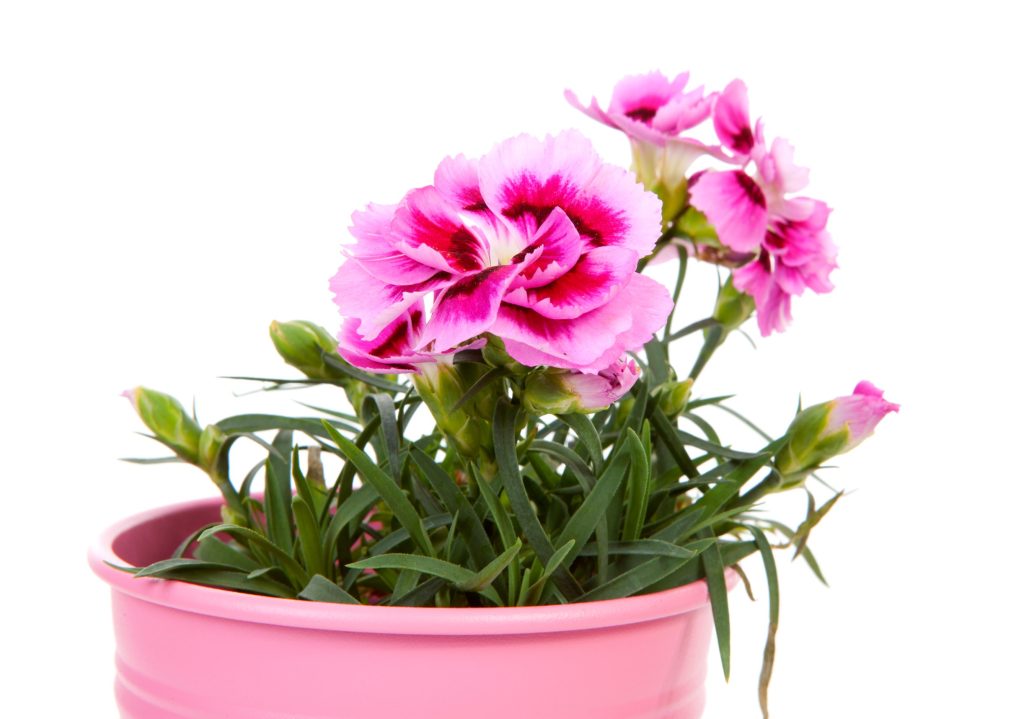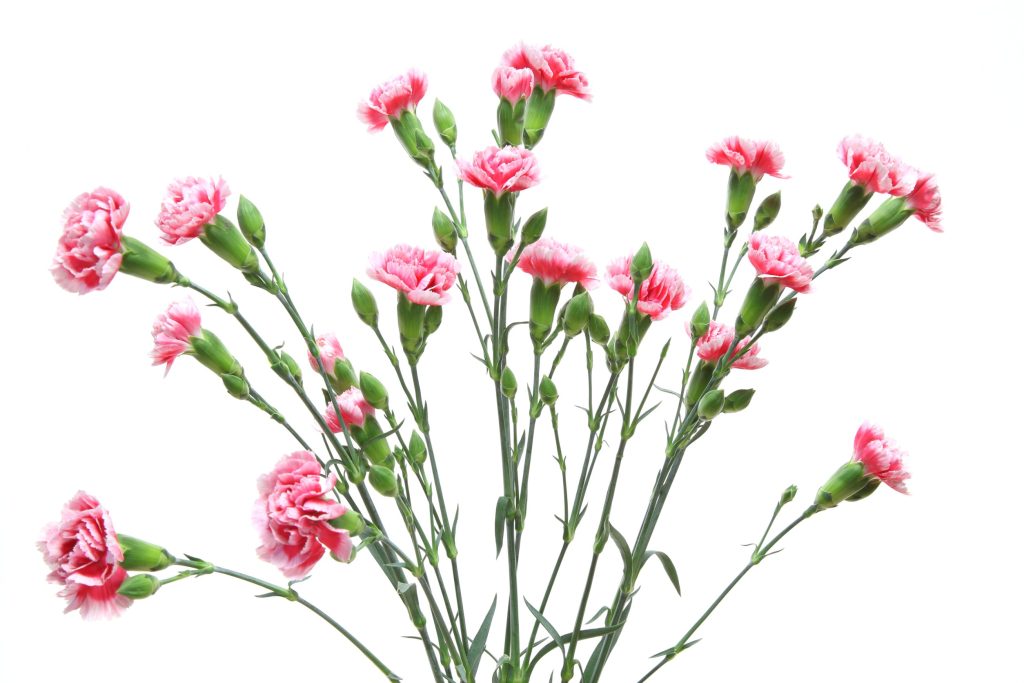Carnation: Is It Annual or Perennial? A Guide to Growing Carnations
Carnation flowers (Dianthus caryophyllus) are herbaceous perennials that thrive in USDA plant hardiness zones 6 to 9. In colder climates, this plant is typically grown as an annual. The vibrant blooms are a popular option for gardens, borders, and containers, and cut flowers brighten the interior.

Dianthus caryophyllus, or carnation, is a perennial herb. However, it can also be grown as an annual. It is a member of the family Caryophyllaceae and comes from Southern Europe to India. Carnations are evergreen plants that grow in groups and have grey-green leaves. Carnation blooms in early summer and spring. The flowers are loosely clumped together and come in red, pink, mauve, yellow, or white. Carnations do best in a garden spot with full sun and soil drains well. In warmer places, it’s best to keep them out of the afternoon sun.
Table of Contents
Why Should You Grow Carnations?
It’s easy to grow carnations. They look great in cottage gardens, flower beds, borders, or pots. Carnations are often cut flowers because they have long stems and clove-scented flowers that last a long time. Your garden will have more butterflies if you plant carnations.
However, there are several reasons why you might not want to grow carnations. They can be invasive, so they shouldn’t be planted in areas where other plants need to grow. They don’t do well in very hot climates and should only be grown outdoors in milder climates. Carnation also needs full sun and good soil drainage, which means that they may not do well if you live in an area with a lot of rainfall or if the ground is clay.
Carnations are associated with love, appreciation, and remembrance. They are commonly given as gifts to commemorate special moments in life or celebrate happy occasions. Carnations also make an elegant floral arrangement that can add beauty and cheer to any room.
They’re still considered to be one of the most versatile flowers. They can be used in a variety of arrangements, and their sweet fragrance is often enjoyed by those who enjoy flowers.
Carnations are one of the most popular flower varieties in the world, and for a good reason. They are stunningly beautiful, relatively drought-tolerant, and easy to grow. Carnations come in various colors and styles, so there is sure to be a carnation that fits your aesthetic taste.
Along with their beauty, carnations boast many health benefits. For example, they have anti-inflammatory properties, which can help reduce pain from conditions like arthritis or migraines. Additionally, carnations contain high levels of antioxidants which can protect cells against damage caused by free radicals. Aside from their therapeutic effects on the body surface layer, some research has also shown that carnation flowers may possess properties that could boost cognitive performance and improve focus in people who suffer from anxiety or depression symptoms. So whether you’re looking for something beautiful to add extra cheerfulness to your home environment or want to improve your overall health by taking advantage of plant-based remedies, Carnation plants should top your list!
Carnation Bloom Time
Most carnations start to bloom in May, at the end of spring. Their growing season can last well into summer, depending on where they are grown and what kind they are. Like roses and hydrangeas, cutting and removing the spent flowers will encourage new buds and make the plant bloom longer.
During carnation bloom time, nutrients are drawn from the soil to help these plants grow faster and fuller-figured.
This is a great time to plant new seeds or containers with fresh herbs or vegetables because they will be able to take advantage of all the extra nutrient uptake that’s going on.
When to Plant Carnations?
Perennial carnation seeds are best planted between the end of fall and the beginning of spring. You can plant your carnation cuttings in May, while late in the fall is best for growing your divisions.
The seeds of annual carnations can be planted in one of two ways. The seeds can be started in March under cover and transplanted to containers in April or May, or they can be grown outdoors in the ground between these months.

A Guide to Growing Carnations
Plant carnations in a spot with four to six hours of sunlight daily. They like the sun more than the shade, so keep that in mind when you decide where to put them. When planting carnations, use soil that drains well, is rich, and has a little alkalinity (pH 6.7-6.9). If the soil is too rich or holds too much water, the flowers won’t bloom right or will change color. Carnations grow best when the daytime temperature is between 50-65° and the nighttime temperature is between 40-50°.
- Carnation Growing From Seeds– Plant carnation seeds an eighth of an inch deep in a mix of soil that drains well. At least 12 inches should be left between each seed. Be careful not to overwater the seeds, especially young ones. Two or three times a week, you should give it a little water. Before you water, you should feel the soil to make sure it has dried out since the last time you watered. In two to three weeks, the seeds will start to grow.
- Carnation Growing From Cuttings- Most professional carnation growers use cuttings to start their plants. To do this, they take cuttings from flowers about to die. Ones grow at the sprout’s end instead of where the stem and branch meet. These cuts should be between 4 and 6 inches long. For them to grow, they need to be planted in pure sand. After 25 to 30 days, they are ready to be moved.
- Carnation Growing From Division- An old carnation plant can be given new life by being divided into several smaller plants. Pull the plant segments apart with your hands or garden tools and dig up the flowering clump. It is best to replant these cuttings as though they were brand new perennials or annuals, taking care to give them plenty of water. Maintaining healthy carnations requires this maintenance every few years.
Care Tips for Carnation
Carnation plants need only the following basic care procedures:
- Water. Once a week, use a soaker hose to provide new plants with a deep soaking of water to encourage healthy root development. Once the roots are established, water the flowers only when the top inch of soil is dry. It’s best to water the plant first thing in the morning to prevent mildew from growing on the delicate foliage.
- Deadhead. Cut flower stems regularly and removes any faded flowers to extend the blooming period and promote new plant growth. When you prune, you increase air flow, which can protect against fungal illnesses like powdery mildew.
- Mulch. Specifically, mulch shredded bark for perennials spread around carnation plants aids weed prevention and soil conservation.
- Reduce pest populations. Aphids, mites, and thrips are all pests that can damage your carnations. If you want to keep insects at bay without using chemical methods, try using companion planting or releasing predators such as ladybugs. In extreme circumstances, a mild insecticidal soap applied to plants may be necessary, but in most cases, a powerful blast of water used once every few days or so should do the thing.
